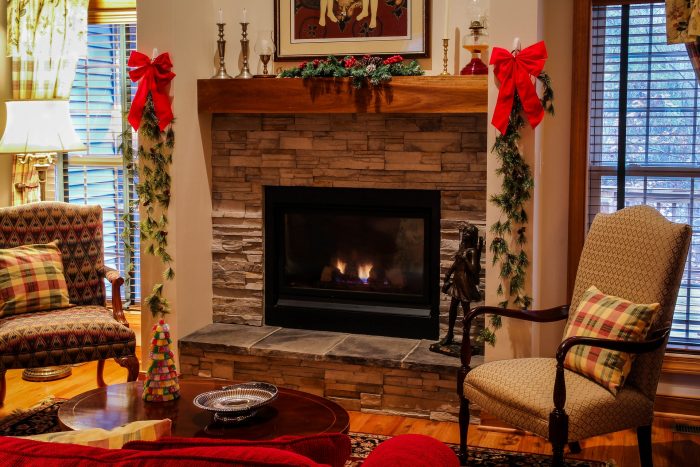Every winter we turn to our heating devices to keep us warm and toasty. But while the heat provided by any given unit may feel the same to us as we sit there warming ourselves by the flames, that doesn’t mean all fireplace units are created equal. In fact, there is often quite a significant difference in the environmental impact that each fireplace unit has, with said impact varying widely depending on both a unit’s design as well as its fuel source.
Why you should consider how you’re heating your home
The earth’s population is growing larger all the time. With a birth occurring every eight seconds compared to a death every twelve, the overall global population increases by an entire person every thirteen seconds. Finding resources for this ever-increasing crowd of people is proving to be more and more of a quandary, as our natural resources are rapidly being depleted and the earth continues to strain under the demand of feeding, housing, and warming so many individuals.
That’s why, along with trying to avoid things like food waste and water pollution, we should also take into consideration things as seemingly humdrum as the way we heat our homes. As already mentioned, it turns out that there are quite a few differences when it comes to the environmental impact different fireplaces have, and being careful how you go about choosing the unit for your particular abode can be an easy way to play your part in the fight to save our world.
Different kinds of fireplaces
There are quite a few different heating options out there. Let’s break down how each choice compares to the rest, both in burning efficiency as well as the environmental impact of the fuel being consumed.
Wood
Burning wood is an excellent choice for heating your home. Not only does it provide a soft, cozy feeling along with that warmth, but it is also a completely carbon-neutral option. Due to the abundance of carbon a tree absorbs while growing, the consequent amount it releases when burned ends up being a cool net neutral. Wood stoves also allow you to take your environmentally sensitive desires to the next level by allowing you to source fallen trees for your fuel, creating even less of an impact in the long run.
Keep in mind, however, if you’re looking for an efficient heat source, you’re going to want a wood stove. Fireplaces with traditional chimneys and open hearths are much less effective, as a great deal of the heat is lost up the chimney during the burning process. Even if you get a wood stove, though, make sure to do your homework, as each model has varying levels of efficiency, with some burning considerably cleaner than others.
Pellet
Of course, burning with wood does require you to have a fire in your house, which can lead to breathing problems due to smoke along with the overall hazard of a fire in the first place. If a wood stove isn’t in the cards for you, you may want to consider trying a pellet stove. Pellets are made from recycled materials like sawdust that usually simply get thrown away. This helps reduce the overall amount of garbage heading to landfills, while simultaneously providing you with a viable heat source that is, once again, quite gentle on the environment.
Liquid propane or natural gas inserts
Next up we have gas inserts, which burn liquid propane or natural gas. However, while these can be fairly efficient on the surface, they don’t tend to heat as well as wood stoves. If you’re trying to heat a larger area, you will want to think twice before popping a gas insert into your existing masonry and assuming it will take all of your problems away.
Masonry heaters
One impressive option that is on the pricier side of things is the masonry heater. A classic option that has been used in places like Scandinavia for centuries, these extremely efficient heaters continue to radiate heat for a long time after the fire within has petered out. Put plainly, they’re built to get the most out of your fuel. However, in addition to their cost, they can be quite complicated to construct and can weigh upwards of a ton, so make sure to plan accordingly.
Electric
Electric fireplaces can be convenient to use and easy to install. However, they are certainly not the most fiscally or environmentally sound option on the list. For one thing, they use electricity, which can be expensive for you, the consumer. In addition, they may be able to burn at a 100 percent efficiency rate, but that doesn’t mean much when one considers that often the electricity being provided comes from plants that are busily burning enormous amounts of coal. Unless you can afford the cost and are aware of where your electricity is sourced from, an electric fireplace tends to be a sub-par option.
Stay warm this winter
While there are some clear front runners in the battle to efficiently heat your home, it’s a comfort, either way, to know that there are options available. Whatever fireplace one ends up choosing, though, making a deliberate and purposeful choice that bears as minimal an environmental impact as possible can be the perfect way to help do your part and contribute to taking care of the earth that we all share.












Read 0 comments and reply